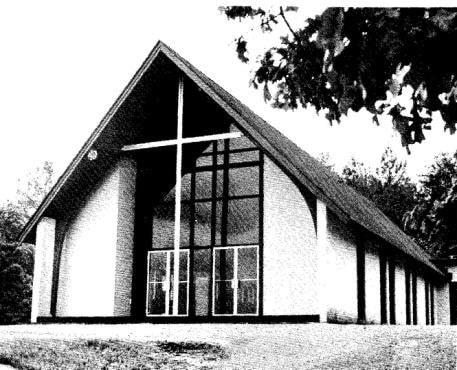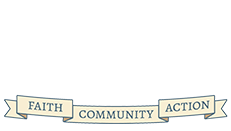History of St. Cecilia Catholic Church

St. Cecilia Mission erected in 1923

St. Cecilia Mission new building site in 1962
The first recorded mass in Jasper, Alabama was celebrated by Father
Patrick O’Reilly in the lobby of the Collins Hotel in 1902. Although he
traveled to towns along the Illinois Central Railroad Line between
Birmingham and the Alabama/Mississippi State line administrating the
sacraments he continued to celebrate Mass monthly at the hotel until
1915 when Mr. and Mrs. Henry McLean opened their home for the
celebration of mass. During those early years mass was celebrated by
many visiting priests including Fathers William Kerrigan, Andrew
Sweeney, Max Coevert, James S. Down, M.E. Kitrick, John Bratton, Thomas
Lenahan, and Fred Diviney.
Father Walter Tobin began
celebrating mass every second Sunday of the month beginning in 1916 for
Mr. and Mrs. Henry McLean and their four children along with Mr.
Blanchard, Mrs. Schlanser, Miss. Simmons, and Miss. Anne Dever of
Cordova. Father James White continued to celebrate the mass in 1918. And
Father Thomas Brady in 1920 when a reported 9 persons in three families
attended.
A brick church was erected on 6th Avenue in
Jasper in 1923 under the leadership of Father Joseph Parker. In a solemn
high mass Bishop P. Allen dedicated the 75 by 35-foot structure for the
community now known as St. Cecilia Catholic Mission. It seated 125
people and cost $12,000. Persons from surrounding missions came to
participate. The Holy Rosary Choir from Gates City in Birmingham sang,
Mrs. John D. Gibbons played the organ, and Mrs. Ellis Walker played the
violin. There were basket dinners with picnicking on the banks of the
Warrior River to celebrate the dedication.
Father Francis
McCormack served 23 people in five families as a mission priest until
1925. Other mission priests then served as they were available including
in 1932 Father J.G. Moir, a Paulist missioner who baptized Clarence W.,
the son of Clarence and Sarah Pare Kreps. in 1934 Fathers Alexander
O’Neil, Hugh J. Duffy, and Lorigan. In 1939 Father Alban J. O’Hara was
appointed mission priest and served until 1944 when St. Cecilia Mission
was placed under the care of the North Alabama Mission organization. In
that year thirty-seven people attended the first Christmas Midnight Mass
along with thirty-two non-Catholics. Then a series of priests served
the mission including Fathers Ballentine, Cordina, Campbell, Mullins,
and Higgins until Father Michael Quealy, who had started the mission in
Haleyville, Alabama arrived. He later was called to serve as a military
chaplain in Vietnam where he was killed in the line of duty.
In 1962 under the supervision of Msgr. Foster, the director of the
North Alabama Missions, a new site was chosen for St. Cecilia Mission on
a hill on Highway 78 West. The land was donated by Dr. Chapman for a
church building seating 125 people, a cry room, and small quarters for
the priest. Msgr. Foster and Father Michael Dyer joined Archbishop
Toolen for the dedication of the building on May 17, 1964 with
thirty-six families present after a postponement due to construction on
the highway. The John Carroll High School Glee club under the direction
of Sister M. Bridget, O.S.B. sang at the mass. Father Henry Doherty, a
John Carroll faculty member, delivered the homily. The columns of marble
at either side of the altar were salvaged from the cathedral in Mobile
following the disastrous fire of 1954. The thirty-four unique windows
were designed by Robert F. Philips, a Birmingham artist. The first mass
was celebrated on Easter Sunday, April 1963.
Archbishop
Toolen raised the status of St. Cecilia Mission to a parish on January
10, 1967 and appointed Father Patrick Donoghue as the first resident
pastor of St. Cecilia Parish. During this time a garage was erected at
the back of the property and the area at the left of the church was
enlarged to make living quarters for the priest. Through the request of
Joe Michaels, a flag that flew over the Capitol in honor of Father Quealy
was presented to the parish by Congressman Tom Bevill on July 5, 1970.
Father Michael McMahon replaced him on September 29, 1973 and reported
ninety registered families. Under his leadership a grotto was built in
1979 and a sign was erected at the bottom of the hill by Allen Lafoy and
Snooky Wallace. Rev. Mr. Dan Whitaker was appointed to serve as deacon
for the parish from 1977 to 1984. In 1979 Father Jeremiah Deasy was
appointed pastor and reported 110 registered families.
On
December 15, 1984, Father Ray Keiser was appointed pastor and saw the
parish grow to 130 families and the addition of a fellowship hall,
kitchen, and classrooms soon following. In 1988 property and a rectory
were purchased adjacent to the church. Bishop Raymond Boland presided
over the parish’s Silver Anniversary on May 17, 1989.
Father Albert Fisher was appointed pastor in 1991. Plans soon developed
for a new facility designed to accommodate 250 people with a main
sanctuary, separate chapel, classrooms, offices, social hall, and
commercial kitchen. Bishop David Foley celebrated the dedication of the
new facility on Highway 195 on June 13, 1999 for 168 registered
families. Bishop Foley made a gift to the parish of a marble bust of St.
Cecilia to mark the occasion. in that year Father Henry McDaid was
appointed pastor and moved into the newly acquired rectory on Shady
Lane.
By 2001 the parish membership had risen to 200
registered families. In that year, Father David Buchanan was appointed
pastor of St. Cecilia Parish and mission priest to thirty-five families
at Our Lady of Guadalupe Mission in Haleyville, where there was a growing
Hispanic community. In August of 2013, Father Joseph Lody was pastor until 2018.
In December 2018 Father Wayne Herpin, S.J. was appointed pastor and continued to serve until July of 2023, when Father Antony Vadakara, CMI, was named Parochial Vicar of the parish and continues to serve today.
On December 3, 2023, the parish officially commemorated 100 years as a faith community at a special Mass. Just before that time, a significant renovation was made to include painting of the church and narthex, new flooring, new kneeler cushions and covers, new covers for chairs and benches, painting of the external main church doors, and a refurbishing of the pews.


